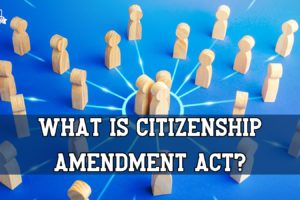
Basic Structure Of The Indian Constitution | UPSC Polity
According to the Indian constitution, the Parliament and the State legislature can make laws within their jurisdictions. However, this power of the Parliament is not absolute, the supreme court has the power to strike down the law if it is trying to change the basic structure of the Indian constitution.
In the constitution of India, there is no term called “ Basic Structure”. But because of the idea that the parliament cannot introduce laws that would amend the basic structure of the constitution evolved over time and in many cases. The idea of the supreme court is to ensure and preserve the nature of Indian democracy and protect the rights of the people. In the judgment of the Kesavananda Bharati case.
The judgment listed some basic structures of the Indian constitution and they are
1. Supremacy of the constitution.
2. Unity and sovereignty of India
3. Democratic and republican forms of government
4. Federal character of the constitution.
5. Secular character of the constitution.
6. Separation of power
7. Individual freedom.
Evolution of Basic Structure
1. In the Shankari Prasad Case, the supreme court suggested that the power of the Parliament to amend the constitution under Article 368 also includes the power to amend fundamental rights.
2. In the Golkanth case, the supreme court overruled its judgment Fundamental rights are given a transcendental position and hence the parliament cannot take away any of the rights.
3. In the Keshavananda Bharati case, the supreme court overruled its judgment in the Golknath case, upheld the validity of the 24th amendment act, and suggested that parliament is empowered to take away any of the fundamental rights. But the changes shouldn’t affect the basic structure of the constitution.
4. The supreme court declared in the 42nd CAA 1976 case, Any amendment cannot be questioned in any court on any ground.
5. In the year 1981, Waman Rao case, the Supreme court clarified that the doctrine would be applied to constitutional amendments enacted after April 24th, 1973.
When the constitution of India was made, leaders and people of the country share the vision and freedom of fundamental rights. That is why the supreme court has decided that any laws can be included but it shouldn’t alter the basic structure of the Indian constitution
Also Read
Tag:Basic Structure, IAS, IFS, India, Indian Constitution, IPS, IRS, Polity, UPSC



